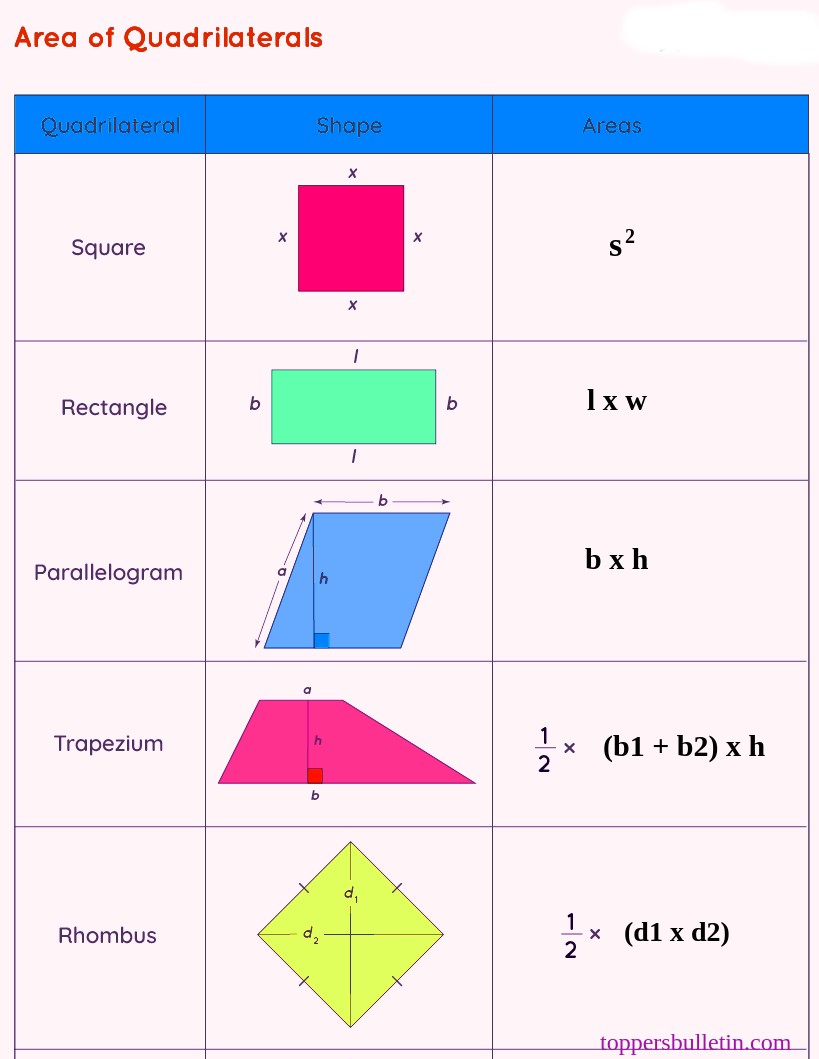Quadrilateral definition
A quadrilateral is a polygon with four sides, four vertices (corners), and four angles. It is also known as a quadrangle or tetragon. The quadrilateral is derived from two words, ‘quadri‘ which means four, and ‘lateral‘ which means side.
Properties of Quadrilaterals:
- Sum of Interior Angles: The sum of the interior angles of a quadrilateral is always 360 degrees.
- Diagonals: A diagonal is a line segment connecting two non-adjacent vertices of a quadrilateral. The number of diagonals in a quadrilateral is equal to half of the product of its sides minus two.
- Area: The area of a quadrilateral can be found by using different formulas based on its type.
- Perimeter: The perimeter of a quadrilateral is the sum of its four sides.
Types of Quadrilaterals
- Parallelogram
- Rectangle
- Rhombus
- Square
- Trapezium
- Kite
Quadrilaterals can be classified into different types based on their properties and characteristics.
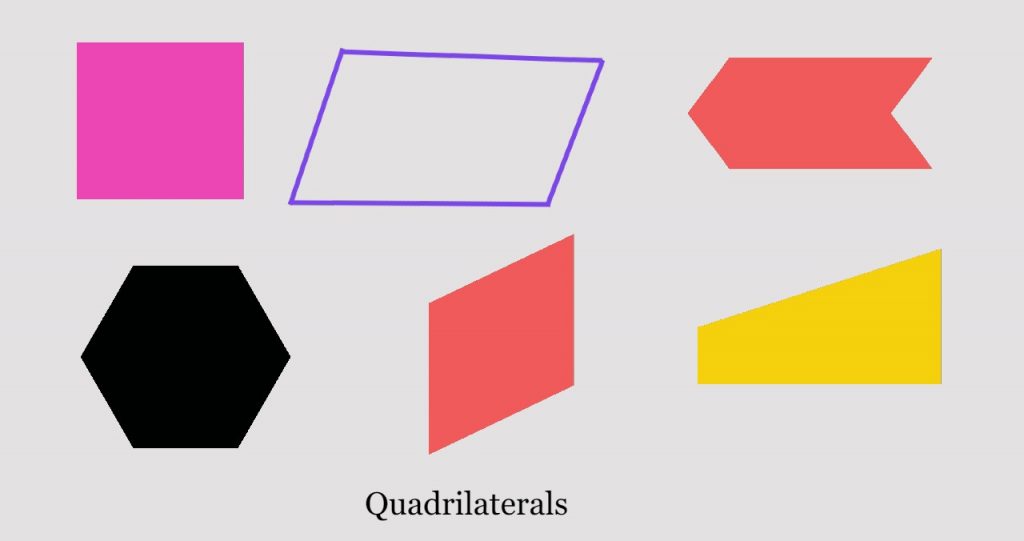
1. Parallelogram
A parallelogram is a quadrilateral with two pairs of parallel sides. The opposite sides of a parallelogram are congruent and parallel to each other. The opposite angles of a parallelogram are also congruent.
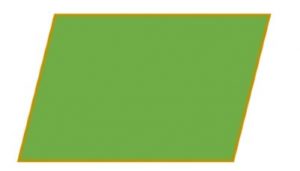
In other words a quadrilateral is a parallelogram if
- its opposite sides are equal.
- opposite angles are equal.
- its diagonals bisect each other.
- it has one pair of opposite sides parallel and equal.
2. Rectangle
A rectangle is a parallelogram with four right angles. The opposite sides of a rectangle are congruent and parallel to each other.
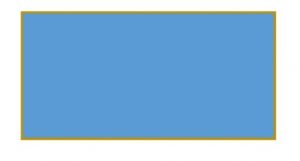
A rectangle properties are:
- opposite sides are equal.
- each angle is a right angle.
- diagonals are equal.
- diagonals bisect each other.
3. Rhombus
A rhombus is a parallelogram with four congruent sides. The opposite angles of a rhombus are congruent.
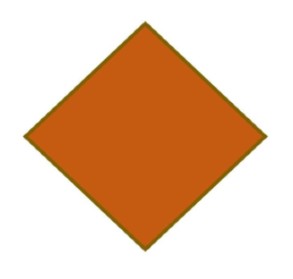
A rhombus properties are:
- all sides are equal.
- opposite angles are equal.
- diagonals bisect each other at a right angle.
4. Square
A square is a rectangle with four congruent sides. It has four right angles and is a regular quadrilateral.
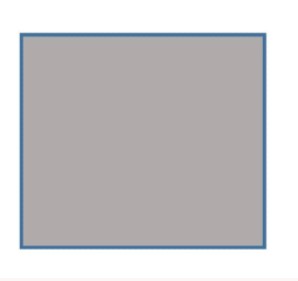
A square properties are:
- all the sides are equal.
- each angle is a right angle.
- diagonals are equal.
- diagonals bisect each other at a right angle.
5. Trapezium
A trapezoid is a quadrilateral with at least one pair of parallel sides. The non-parallel sides are called legs and the parallel sides are called bases. A trapezium properties are:
- one pair of opposite sides is parallel.
- interior angles on the same side of each of the non-parallel sides are supplementary.
6. Kite
- two pairs of adjacent sides are equal and opposite sides are unequal.
- diagonals intersect each other at right angles.
- the diagonals bisects the other diagonal.
- only one pair of opposite angles is equal.
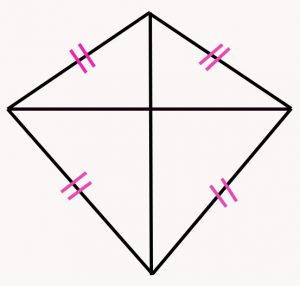
Quadrilateral examples in real life
We can see the shape of quadrilaterals in several objects around us, like in a deck of cards, a chessboard, a kite, a tub of popcorn, and an arrow.
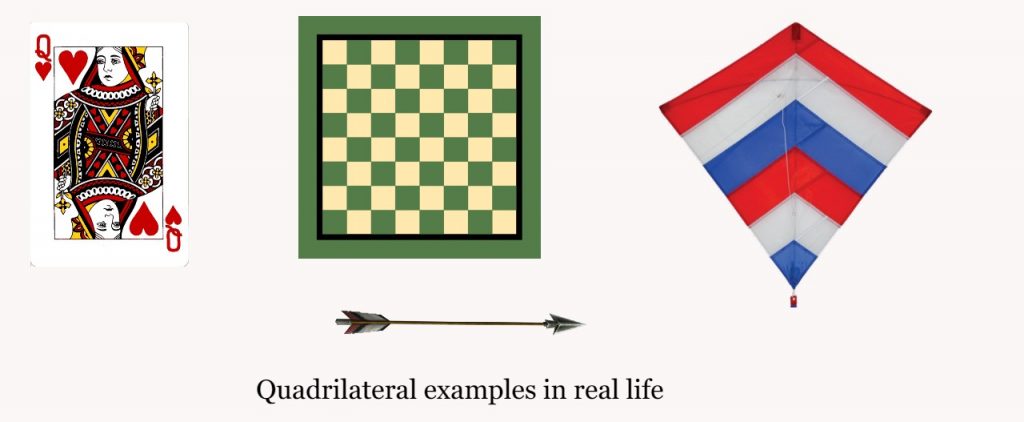
Area of Quadrilaterals
The formula for finding the area of a quadrilateral depends on the type of quadrilateral. Here are the formulas for some common types of quadrilaterals:
| Quadrilateral Type | Formula for Area |
|---|---|
| Square | Area = s2 |
| Rectangle | Area = l x w |
| Parallelogram | Area = b x h |
| Rhombus | Area = (d1 x d2) / 2 |
| Trapezoid | Area = ((b1 + b2) / 2) x h |
Note:
- “s” represents the length of a side in a square
- “l” represents the length and “w” represents the width of a rectangle
- “b” represents the length of the base and “h” represents the height of a parallelogram and trapezoid
- d1 and d2 represent the length of the diagonals of a rhombus
- In a trapezoid, b1 and b2 represent the lengths of the parallel bases, and “h” represents the height or perpendicular distance between the bases.
Quadrilateral Examples
Example1: If the side length of a square is 5 cm, find the area of Square.
Area = s2
= 52
area of Square = 25 square cm
Example2: If the length of a rectangle is 8 cm and the width is 4 cm, then find the area of Rectangle.
Area = l x w
= 8 x 4
the area of Rectangle = 32 square cm
Example3: If the base of a parallelogram is 10 cm and the height is 6 cm, then find the area of Parallelogram.
Area = b x h
= 10 x 6
area of Parallelogram = 60 square cm
Example4: If the diagonals of a rhombus are 6 cm and 8 cm, then find the area of Rhombus.
Area = (d1 x d2) / 2
= (6 x 8) / 2
the area of Rhombus = 24 square cm
Example5: If the two parallel bases of a trapezoid are 6 cm and 10 cm, and the height is 8 cm, then find the area Trapezoid.
Area = ((b1 + b2) / 2) x h
= ((6 + 10) / 2) x 8
the area Trapezoid = 64 square cm

